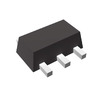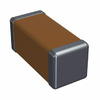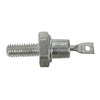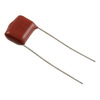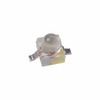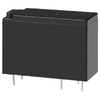220 Ohm Resistor
Resistors are small parts used in electronic circuits to help control the flow of electricity. One common type is the 220 Ohm resistor, which is often used because it provides just the right amount of resistance for many situations. Whether you're building simple LED circuits or working with more advanced electronic setups, the 220 Ohm resistor can help ensure that everything works smoothly. This guide will explain the features, uses, and details of the 220 Ohm resistor in a way that is easy to understand, so you can see how it fits into different kinds of projects.Catalog

Figure 1: 220 Ohm Resistor
What Is a 220 Ohm Resistor?
A 220 Ohm resistor is a small electronic part that slows down the flow of electrical current in a circuit. It gives 220 Ohms of resistance, which means it controls how much current can pass through. The number "220" tells you how much the resistor resists the current, and "Ohms" is the unit used to measure that resistance, shown by the symbol "Ω."
This type of resistor is commonly used when you need to limit the current to a certain level to avoid problems like overheating or damage to other parts in the circuit. The 220 Ohm resistor is a middle-level resistor, meaning it doesn't block the current too much but also doesn't let too much through. It's often used in everyday electronics, such as when you connect an LED to a power source. The resistor helps make sure the LED doesn't get more electricity than it can handle.
The 220 Ohm resistor is simple to identify using colored bands printed on the part, which represent its value. It's a common choice in many circuits because it provides just the right amount of resistance for lots of different situations.
Key Features of a 220 Ohm Resistor
A 220 Ohm resistor is a common part used in electronic circuits to control the flow of electricity. It helps prevent too much current from flowing through other parts of the circuit, which could cause damage. Below are the main features of this resistor, explained in simple terms.
Resistance Value: 220 Ohms
The 220 Ohm resistor has a resistance of 220 Ohms. Resistance means how much the resistor slows down the flow of electricity. The higher the resistance, the less current passes through. In this case, 220 Ohms provides a moderate amount of resistance, which is good for controlling the flow of current in various basic circuits. For example, when connecting an LED to a power source, this resistor helps keep the current at a safe level so the LED doesn't burn out.
Power Rating
The power rating of a resistor shows how much energy it can handle before it overheats. Power is measured in watts (W), and common power ratings for resistors are 1/4 watt (0.25W), 1/2 watt (0.5W), and 1 watt. If the resistor is used in a circuit where too much power passes through it, the resistor can get hot and even fail. For example, a 1/4 watt 220 Ohm resistor can handle up to 0.25 watts before it overheats. It's important to choose the right power rating based on the amount of current in your circuit to avoid damaging the resistor or the other components.
Tolerance
Tolerance tells you how close the resistor's actual resistance is to its labeled value. It is usually given as a percentage, like ±5% or ±10%. For example, a 220 Ohm resistor with a ±5% tolerance means its actual resistance could be anywhere from 209 to 231 Ohms. Tolerance is shown by a color band on the resistor, with gold representing ±5% and silver representing ±10%. Lower tolerance means the resistor's value is more accurate, while higher tolerance means it can vary more from its labeled value.
Temperature Coefficient
The temperature coefficient explains how much the resistor's resistance changes when the temperature goes up or down. It is measured in parts per million per degree Celsius (ppm/°C). For instance, if a resistor has a temperature coefficient of 100 ppm/°C, it will change its resistance slightly (0.022 Ohms for a 220 Ohm resistor) for every degree Celsius change in temperature. The lower the temperature coefficient, the less the resistor’s value changes when the temperature shifts, which can help keep the circuit running smoothly even when the temperature changes.
Stability and Reliability
Good resistors are made to last and to keep working well even when the conditions around them change, like if the temperature or humidity goes up or if they are used for a long time. Stability means the resistor will keep its resistance value without drifting too much, while reliability means it will keep working without breaking down. A 220 Ohm resistor that stays stable and reliable helps make sure your circuit continues to work as expected over time, without needing constant adjustment or replacement.
Color Codes
Resistors use color bands to show their value, making it easy to identify them without needing a tool to measure them. For a 220 Ohm resistor, the color bands are red, red, and brown. The first red band represents the number 2, the second red band also represents 2, and the brown band means you multiply by 10. So, 22 multiplied by 10 equals 220 Ohms. The fourth band, which is usually gold or silver, shows the tolerance (gold for ±5%, silver for ±10%). These color codes allow people to quickly figure out the value of a resistor at a glance.
220 Ohm Resistor Package Types
Resistors, including the 220 Ohm resistor, come in different shapes and sizes to match various uses. These shapes and sizes are known as package types, and they help fit resistors into different kinds of electronic setups. The two main types are through-hole resistors and surface-mount resistors (SMD).
Through-hole Resistors

Figure 2: Through-Hole Resistor
Through-hole resistors are larger and have long wire leads that go through holes on a printed circuit board (PCB). They are commonly used when resistors need to be strong and easy to place. There are two types of through-hole resistors: axial and radial.
• Axial Resistors
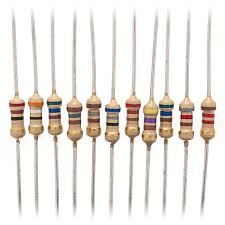
Figure 3: Axial Resistors
Axial resistors have wires (leads) sticking out from both ends of the resistor's body. This shape makes them easy to work with, especially when putting circuits together by hand. They are often used in small projects or when testing a new circuit design.
• Radial Resistors

Figure 4: Radial Resistors
Radial resistors have both wires coming out from the same side. These resistors take up less space, making them helpful when there isn’t much room available on the circuit board, especially for tall components.
Surface-mount Resistors (SMD)
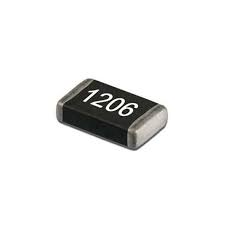
Figure 5: Surface-Mount Resistor (SMD)
Surface-mount resistors, or SMD resistors, are very small and are placed directly onto the surface of the circuit board. They don't have long wires like through-hole resistors. SMD resistors are often used in devices where space is tight, such as in phones or small gadgets. Because they are so small, machines usually place them on the circuit board during the manufacturing process.
220 Ohm Resistor Color Code
|
|
Band
One |
Band
Two |
Band
Three |
Band
Four |
Band
Five |
Band
Six |
|
Four
Band |
Red |
Red |
Brown |
± % |
- |
- |
|
Five
Band |
Red |
Red |
Black |
Black |
± % |
- |
|
Six
Band |
Red |
Red |
Black |
Black |
± % |
R(T°) |
To find out the resistance of a 220 Ohm resistor, you can use the color bands on the resistor and a resistor color chart to decode them. A common 220 Ohm resistor might have this color code:
• Red-Red-Brown-Gold (with a ±5% tolerance) or Red-Red-Black-Black-Gold (with a ±5% tolerance)
Here's how it works:
The 1st Band (Red) stands for the number 2.
The 2nd Band (Red) also stands for the number 2.
The 3rd Band (Brown) tells you to multiply by 10.
The 4th Band (Gold) means the resistor has a ±5% tolerance.
This gives the resistor a value of 220 Ohms, with a tolerance of ±5%. This means the actual resistance could be between 209 Ohms and 231 Ohms.
Alternative 10% Tolerance
For a 10% tolerance, the fourth band would be silver, which means the resistor's value could range from 198 Ohms to 242 Ohms.
5-Band and 6-Band Resistors:
• 5-Band Resistors: An extra band helps provide a more accurate reading of the resistor's value. For example, a 220 Ohm resistor might have color bands like Red-Red-Black-Black-Gold.
• 6-Band Resistors: These resistors have a sixth band that shows how the resistor's value changes with temperature, called the temperature coefficient.
How to Read Resistor Color Codes
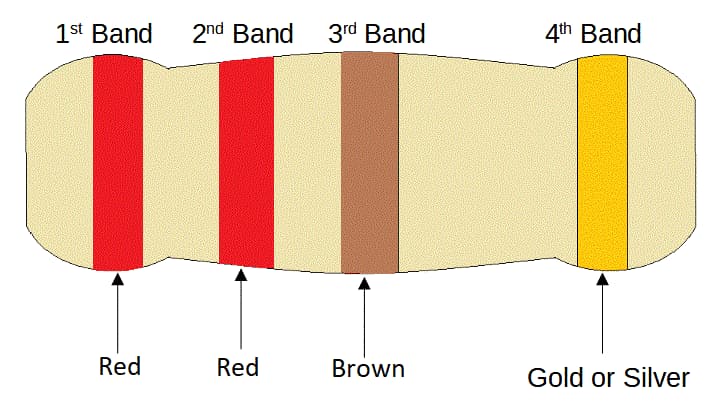
Figure 6: 4-Band Resistor Color Code Diagram
Reading a resistor's color code is a simple process once you know how to interpret the bands on the resistor. Resistors typically have 4, 5, or 6 colored bands that represent their value, tolerance, and sometimes temperature coefficient. Here's a clear step-by-step method for reading a 4-band resistor, which is the most common type:
• Start with the band farthest from the tolerance band. The tolerance band is typically gold or silver, which makes it easy to identify.
• First two (or three) bands represent significant digits. These are the numbers that provide the core value of the resistor.
• The third (or fourth) band represents the multiplier. This multiplies the core value to give you the actual resistance in ohms (Ω).
• The final band represents tolerance. This tells you how accurate the resistor is, typically in percentages like ±5% (gold) or ±10% (silver).
Example: Reading a 220 Ohm Resistor (4 Bands)
• Band 1 (Red): 2 (First digit)
• Band 2 (Red): 2 (Second digit)
• Band 3 (Brown): 10 (Multiplier of 10)
• Band 4 (Gold): ±5% (Tolerance)
Putting this together:
The first two digits (22) are multiplied by 10, resulting in 220 ohms.
The gold band indicates the resistor has a ±5% tolerance, meaning the actual resistance could vary between 209 ohms and 231 ohms.
Applications of 220 Ohm Resistors

Figure 7: 220 Ohm Resistors in Electronic Circuit
A 220 Ohm resistor is often used in different types of electronic circuits because it provides a good balance of resistance and reliability. Below are some common uses of the 220 Ohm resistor, explained in simple terms:
LED Circuits
In LED circuits, a 220 Ohm resistor is used to control the flow of electric current. Without this resistor, the LED might take in too much electricity, causing it to get too hot and stop working. The resistor helps control the current so that the LED can work properly without getting damaged.
Voltage Dividers
A 220 Ohm resistor can be used with other resistors to split the voltage into smaller parts. This is helpful when you need to power devices that can only handle lower voltages than what the main power source provides.
Biasing Transistors
In circuits that use transistors, a 220 Ohm resistor helps the transistor work correctly. Transistors are like switches or amplifiers, and the resistor helps them stay in the right working range so they can either turn things on and off or boost a signal, depending on how they are used.
Feedback Circuits
In some circuits, especially in power supplies, resistors help control the amount of output voltage or current. A 220 Ohm resistor can be used in a feedback loop, where it helps fine-tune the circuit, keeping everything steady and making sure the circuit works as expected.
Wattage Ratings for 220 Ohm Resistors
Resistors with the same resistance value, like a 220 Ohm resistor, can come with different wattage ratings. These ratings indicate how much power the resistor can safely dissipate without overheating or being damaged. The choice of wattage depends on the requirements of the specific circuit. Below are common wattage ratings for 220 Ohm resistors and their typical applications:
1 Watt Resistor: Designed for circuits that need to dissipate a larger amount of heat. Ideal for higher-power applications where more current passes through, generating more heat. These resistors are bulkier and can withstand more thermal stress.
1/2 Watt Resistor: Provides a balance between size and heat dissipation. It is suitable for medium-power circuits where space is limited, but the circuit still needs to handle moderate power levels.
1/4 Watt Resistor: The most common type used in low-power applications, such as signal processing or basic electronic projects. These resistors are small and inexpensive, making them ideal for general-purpose use.
5 Watt Resistor: Meant for high-power applications like power supplies or audio amplifiers, where significant amounts of heat are generated. These resistors are larger and can handle much higher power levels, ensuring the circuit operates safely under heavy load conditions.
Conclusion
The 220 Ohm resistor, with its ability to control the flow of electricity, is used in many different kinds of circuits, from LED lights to more complex setups like voltage dividers and transistor circuits. Its clear labeling through color codes and its different power ratings make it a popular choice among people working with electronics. By knowing its key features, such as resistance value, tolerance, and power rating, you can choose the right resistor for your project and avoid potential issues like overheating. The 220 Ohm resistor helps keep circuits working as expected, making it a reliable and useful part of many electronic projects.
Frequently Asked Questions [FAQ]
1. How to identify a 220 ohm resistor?
To identify a 220 Ohm resistor, you need to look at the color bands on it. The colors are red, red, and brown. The first red represents 2, the second red also represents 2, and the brown band means you multiply by 10. This gives a total of 220 Ohms. The fourth band, usually gold or silver, shows how accurate the resistor is.
2. Why do we use a 220 ohm resistor for LEDs?
We use a 220 Ohm resistor with LEDs to prevent too much electricity from flowing through the LED. If too much current goes through, the LED could get too hot and stop working. The resistor helps control the flow of electricity, protecting the LED.
3. What is the voltage of a 220 ohm resistor?
A resistor doesn't have its own voltage. However, it affects the voltage in a circuit based on how much current passes through it. You can calculate the voltage drop across a 220 Ohm resistor using the formula V = I x R, where "V" is voltage, "I" is current, and "R" is resistance.
4. What size resistor to reduce 12V to 5V?
To lower 12V to 5V, you usually need more than just a single resistor. It's best to use a voltage regulator or a voltage divider made from two resistors. The exact resistor values will depend on the current flowing in the circuit. Using just one resistor is not a reliable way to lower voltage in most cases.
5. How to know what resistor to use for LED?
To figure out what resistor to use with an LED, you need to know the LED’s forward voltage and how much current you want it to use. Once you have that, use the formula R = (Vsource - VLED) / ILED. This will give you the resistor value that limits the current to the right level for the LED to work properly without getting damaged.
About us
ALLELCO LIMITED
Read more
Quick inquiry
Please send an inquiry, we will respond immediately.

Mastering the Art of Soldering Ball Grid Arrays
on September 9th

Understanding Capacitors and Their Symbols in Circuit Diagrams
on September 6th
Popular Posts
-

What is GND in the circuit?
on January 1th 3254
-

RJ-45 Connector Guide: RJ-45 Connector Color Codes, Wiring Schemes, R-J45 Applications, RJ-45 Datasheets
on January 1th 2801
-

Understanding Power Supply Voltages in Electronics VCC, VDD, VEE, VSS, and GND
on November 19th 2608
-

Fiber Connector Types: SC Vs LC And LC Vs MTP
on January 1th 2250
-

Comparison Between DB9 and RS232
on January 1th 1867
-

What Is An LR44 Battery?
Electricity, that ubiquitous force, quietly permeates every aspect of our daily lives, from trivial gadgets to life-threatening medical equipment, it plays a silent role. However, truly grasping this energy, especially how to store and efficiently output it, is no easy task. It is against this background that this article will focus on a type of coin cell battery that may seem insignificant on the...on January 1th 1836
-

Understanding the Fundamentals:Inductance Resistance, andCapacitance
In the intricate dance of electrical engineering, a trio of fundamental elements takes center stage: inductance, resistance, and capacitance. Each bears unique traits that dictate the dynamic rhythms of electronic circuits. Here, we embark on a journey to decipher the complexities of these components, to uncover their distinct roles and practical uses within the vast electrical orchestra. Inductan...on January 1th 1791
-

What Is RF and Why Do We Use It?
Radio Frequency (RF) technology is a key part of modern wireless communication, enabling data transmission over long distances without physical connections. This article delves into the basics of RF, explaining how electromagnetic radiation (EMR) makes RF communication possible. We will explore the principles of EMR, the creation and control of RF signals, and their wide-ranging uses. The article ...on January 1th 1780
-

CR2430 Battery Comprehensive Guide: Specifications, Applications and Comparison to CR2032 Batteries
What is CR2430 battery ?Benefits of CR2430 BatteriesNormCR2430 Battery ApplicationsCR2430 EquivalentCR2430 VS CR2032Battery CR2430 SizeWhat to look for when buying the CR2430 and equivalentsData Sheet PDFFrequently Asked Questions Batteries are the heart of small electronic devices. Among the many types available, coin cells play a crucial role, commonly found in calculators, remote controls, and ...on January 1th 1775
-

Comprehensive guide to hFE in transistors
Transistors are crucial components in modern electronic devices, enabling signal amplification and control. This article delves into the knowledge surrounding hFE, including how to select a transistor's hFE value, how to find hFE, and the gain of different types of transistors. Through our exploration of hFE, we gain a deeper understanding of how transistors work and their role in electronic circu...on November 19th 1762












